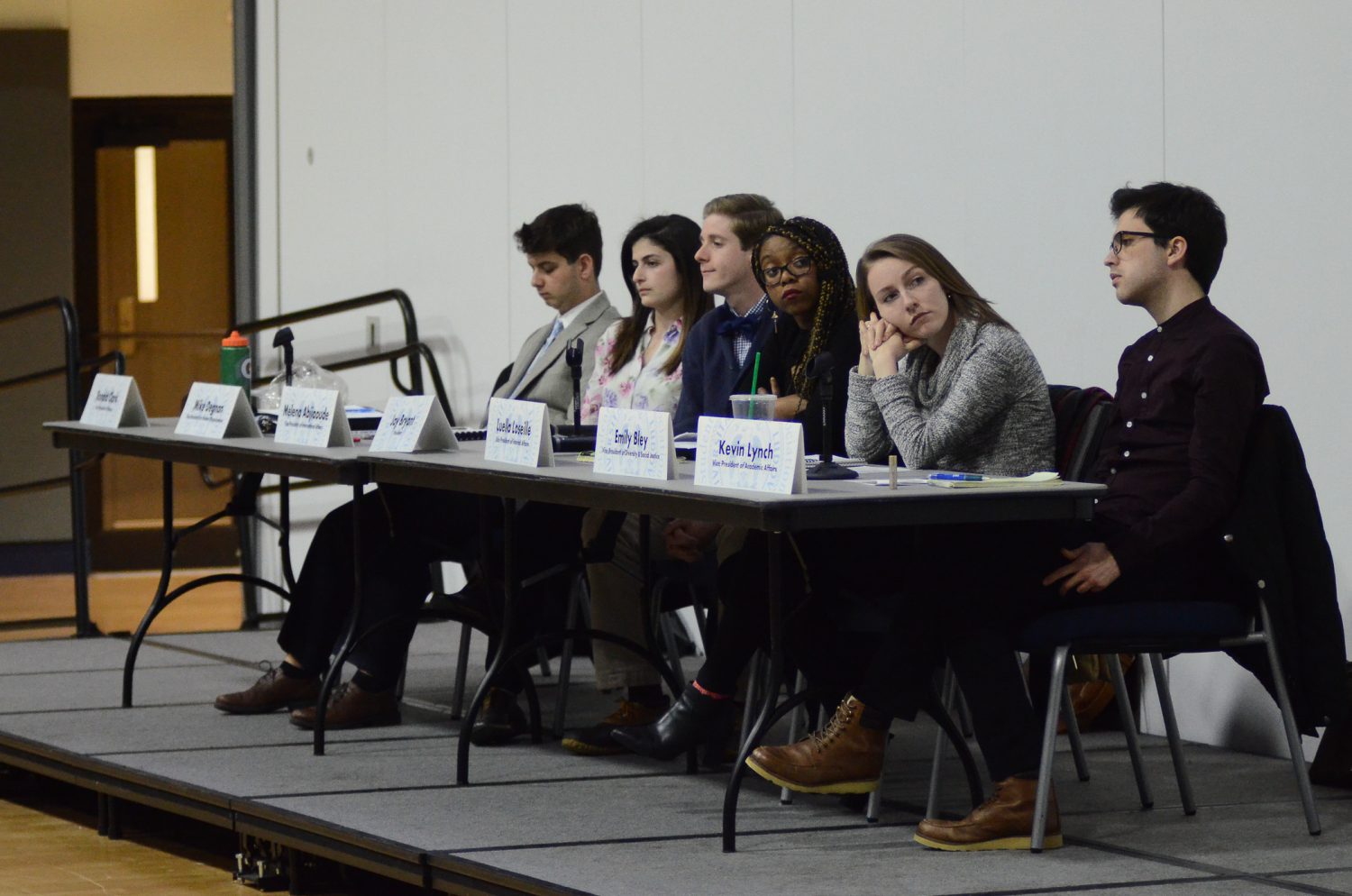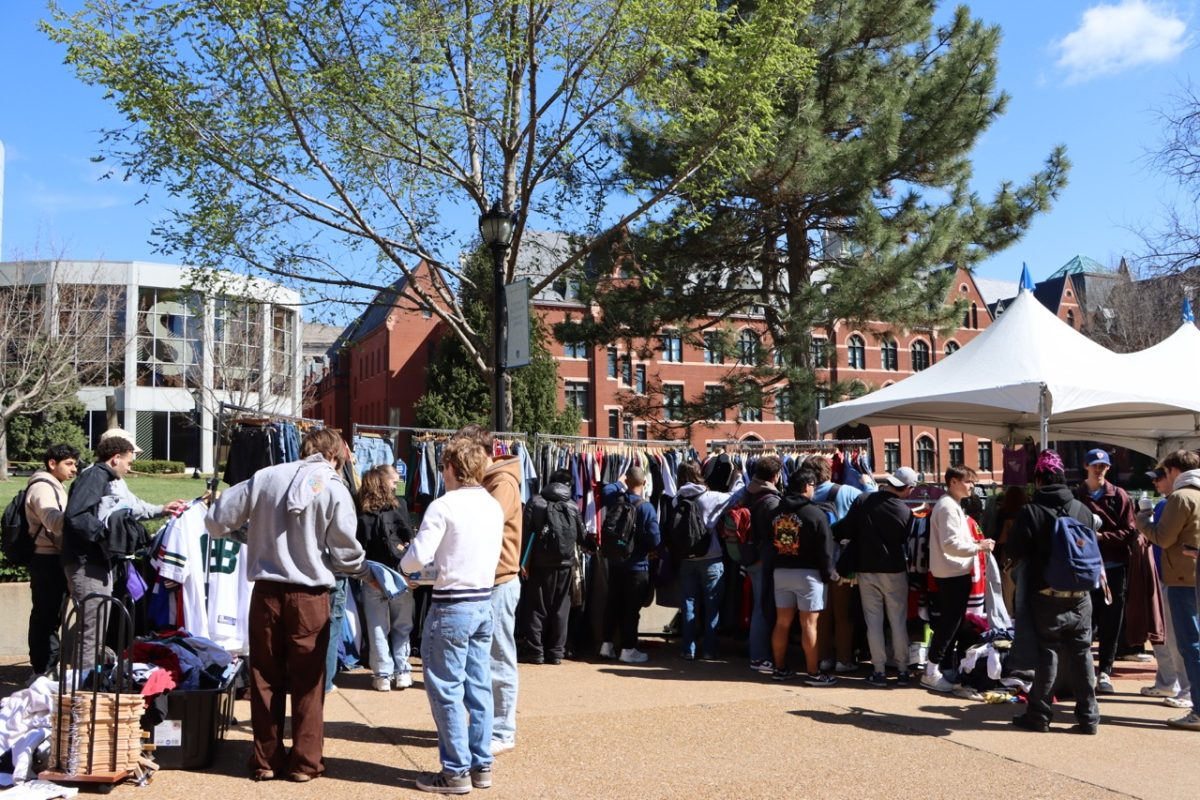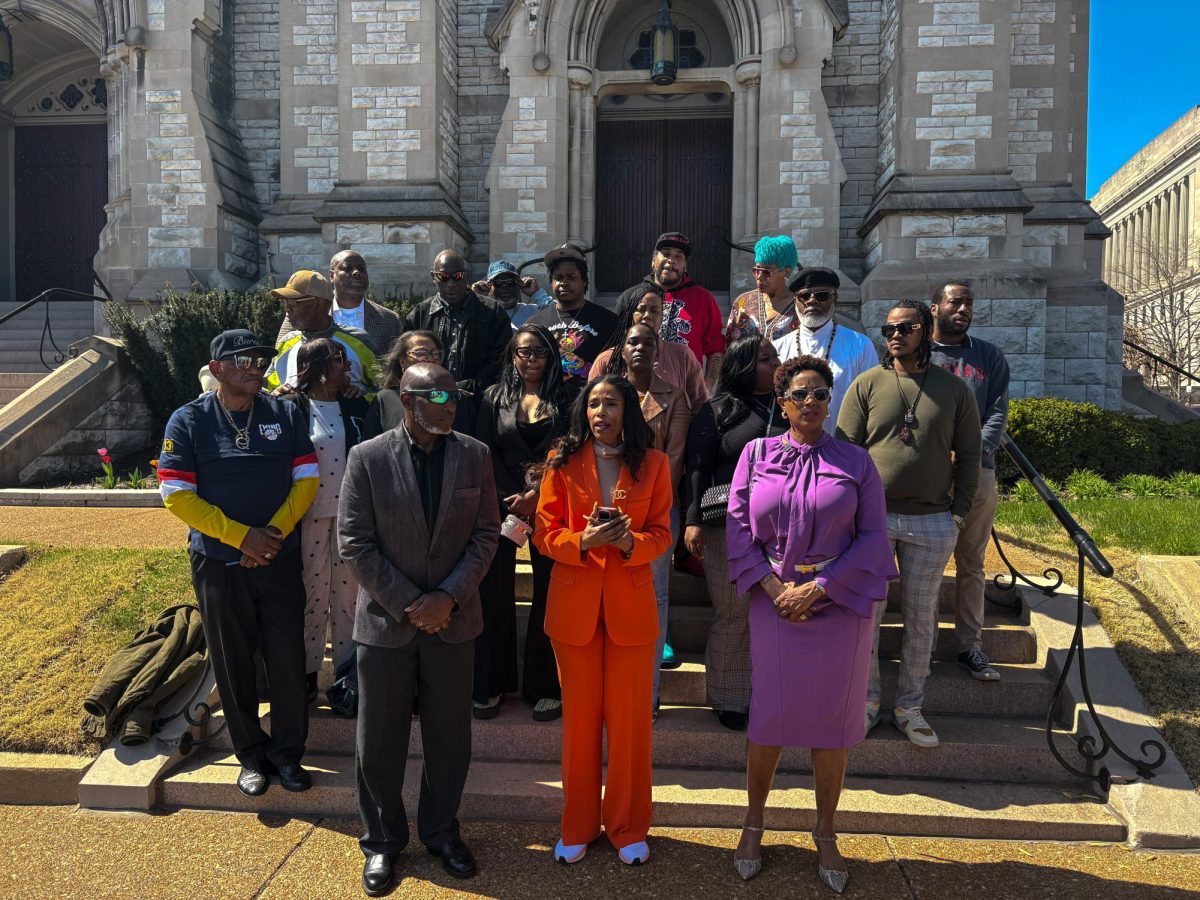Administration trots out concept for implementation
The SGA Senate was not in its usual BSC digs for its weekly meeting on Wednesday, Feb. 24. In light of SLU’s budget shortfalls for the fiscal year 2016 – and its subsequent hiring of the management firm Bain & Company to help right the financial situation – the senate meeting was held in the Center for Global Citizenship, which allowed for more students to participate in the meeting and engage with its main speakers – David Heimberger, Vice President and Chief Financial Officer, and Bain associates Marcus Leonard and Tessa Bysong.
SLU has been in financial straits recently – with a budget deficit anticipated for the most recent fiscal year – due to a variety of factors. Heimburger’s presentation outlined these challenges and put forth some of the things that the university, under the guidance of the Board of Trustees, is doing to mend the situation and establish a long-term plan for the health of the school’s finances. One of the main reasons SLU has monetary constraints, Heimburger said, is because of a national trend: there are fewer seniors graduating high school than in years past.
“Because of some enrollment declines,” Heimburger said, “we are seeing a shortfall in our budget for FY 16, so we’re looking at a deficit in this current fiscal year that we’re still working through with our trustees and with our vice presidents … barring a large, unrestricted gift from a donor … we are looking at a deficit for ’16.”
Because fewer students means less tuition money collected – a significant part of the university’s revenue source – tuition increases are closely considered, Heimburger stressed. The medical school, for example will see a tuition hike of .4% more than in the past – 2.4% in 2017 versus 2.0% in 2016. But this is due to the applicant demand that this particular school receives.
“One of the reason why we’re raising the medicine rate is there is such a high demand for that program – we get over 8,000 applications for 175 slots – so the demand is quite high,” Heimburger said.
The endowment – which currently sits at just over $1 billion – is another valuable financial asset that the university has turned to, though not, perhaps, in the way that most people would expect. While banks see it as good collateral – $1 billion is certainly a valuable bargaining chip in achieving friendly interest rates – the endowment itself is not, Heimburger iterated, a permanent fix for the budget shortfalls.
“It’s really important [to know that] when we elicit a gift from a donor, we tell them that we’re going to protect that gift in perpetuity,” Heimburger said. “So when somebody gives us a million dollars, they fully expect that million dollars to be here twenty, thirty, forty years from now contributing to the same, specific area that they donated money for. So it’s really important for us as we invest the endowment to make sure that we have a very long view of this, that it has an infinite horizon … we do not want to jeopardize the purpose or the principle of the endowment by spending too much from it or drawing it down too quickly.”
The university does take money from the endowment every year, but this money is used to pay for long-term financial commitments.
“The objective of the endowment is really to provide annual, predictable sources of revenue,” Heimburger said.
“For this year, it’s around $41 million, from the endowment … that goes into our operating budget. This goes for scholarships … endowed chairs, endowed faculty members, and some of it falls through to general operating revenue,” he added.
However, Heimburger did mention that the Board of Trustees approved a temporary, three-year increase in the percentage that the university takes out of the endowment each year. That new spend rate will be 5%, instead of 4.5%, which is the long-term annual basis rate determined by the university. But Heimburger, in a response to a question about the increase, posited by Senator Tommy English, mentioned that he does not see the increase as damaging to the endowment, and he anticipates that in two years – after new budget adjustments are implemented – the increase will no longer be needed.
These new budget adjustments are what Bain & Company, the management firm hired by SLU as part of its recently initiated Magis Operational Excellence Program, is trying to accomplish during its stint with SLU.
“We’ll be here for about 18 months end-to-end, primarily in the background helping … guide the working team and helping do that first round of implementation, with the goal of really transferring those capabilities and teaching the community here how to do that completely unsupported and embedding that culture of operational excellence so this kind of thing can go on for years,” Bysong said.
The team that Bysong and Leonard – and the rest of the Bain associates assigned to SLU – will be helping is anchored by the steering committee, a group of eighteen composed of SLU faculty and administrators. The steering committee will work to cull budgetary information and ideas so that university president Dr. Fred Pestello can make the call on ways that SLU can improve its financial standing. And student collaboration is a crucial part of the process, the Bain associates said.
“We really hope [that] through forums like this … [we can] get a lot of ideas about what are ways that we can actually improve. What are the opportunities? Where do they exist? And what’s the most important to you?” Leonard said.
After the discussion of the 18-member steering committee, College of Philosophy and Letters senator Dan Kennedy, S.J. asked about the integration of the mission within the financial avenues being pursued. He mentioned that some aspects of the mission tend to be stressed over others, depending on what segment of the campus community is engaging the school’s Jesuit principles. No Jesuits are on the steering committee.
“The Jesuit aspect has come up more than once in meetings and discussions of the steering committee,” Heimburger said in response. “I sit right across the hall from Fr. Chris Collins, and I really expect him to be my alter ego in this thing, and I will use him as a sounding board … There’s only 28 Jesuit universities in the country … if you think about brands of universities, brands of higher ed, you have the Ivy Leagues, and I would contend that the second most recognizable name is the Jesuits, and it’s because there’s really true value in what we do in terms of education. If we forget that, we’re dead, and so, we won’t.”










